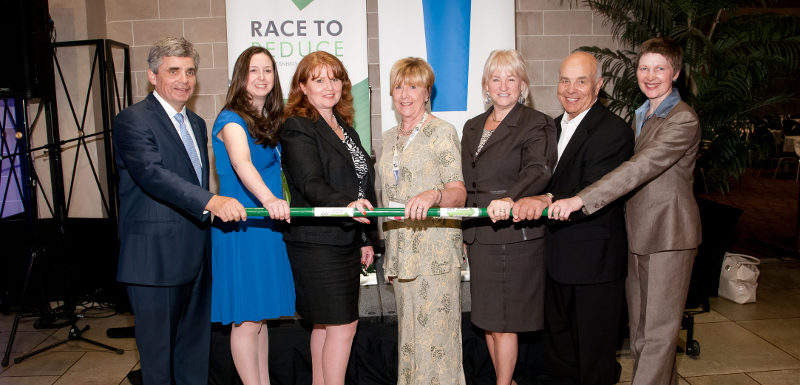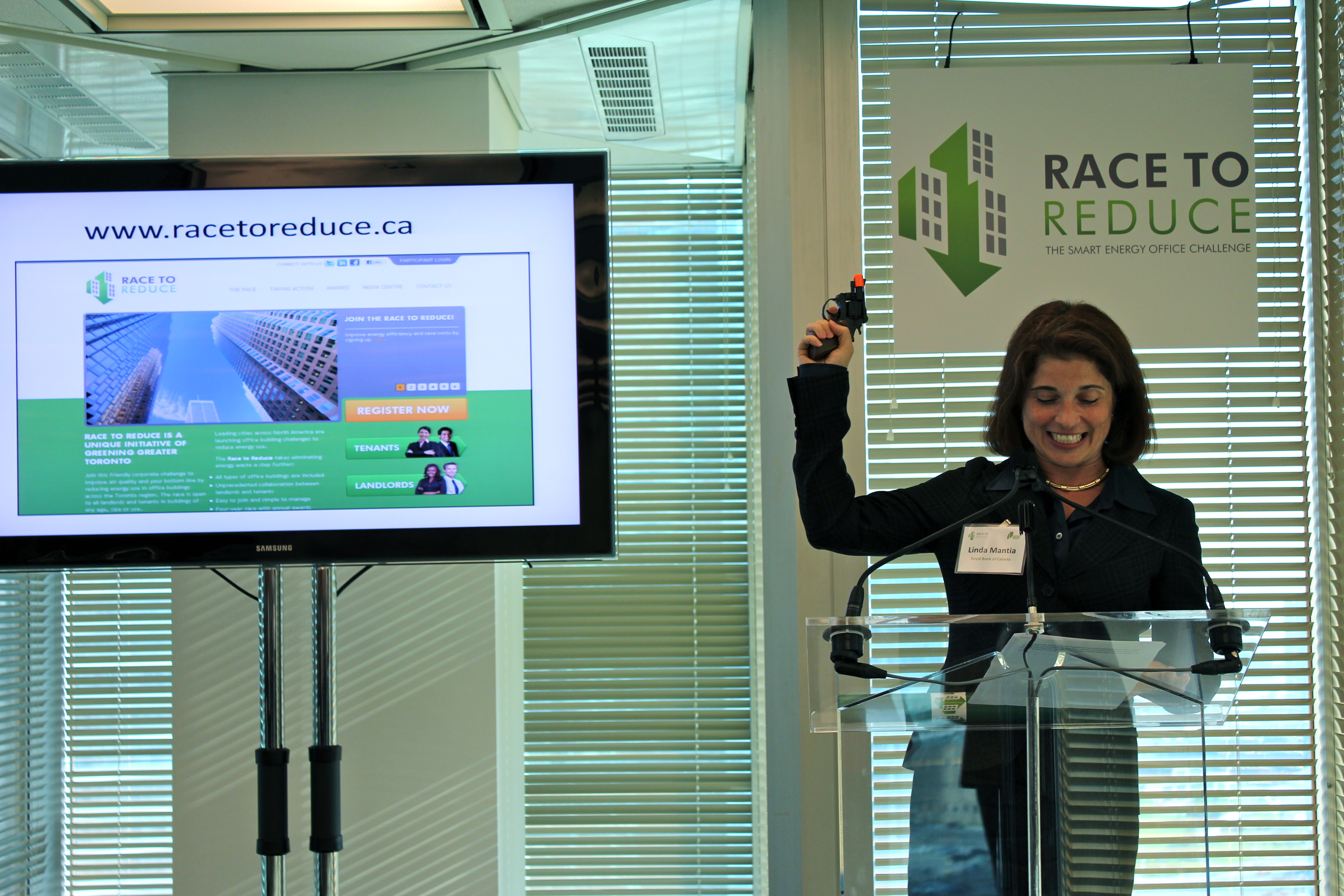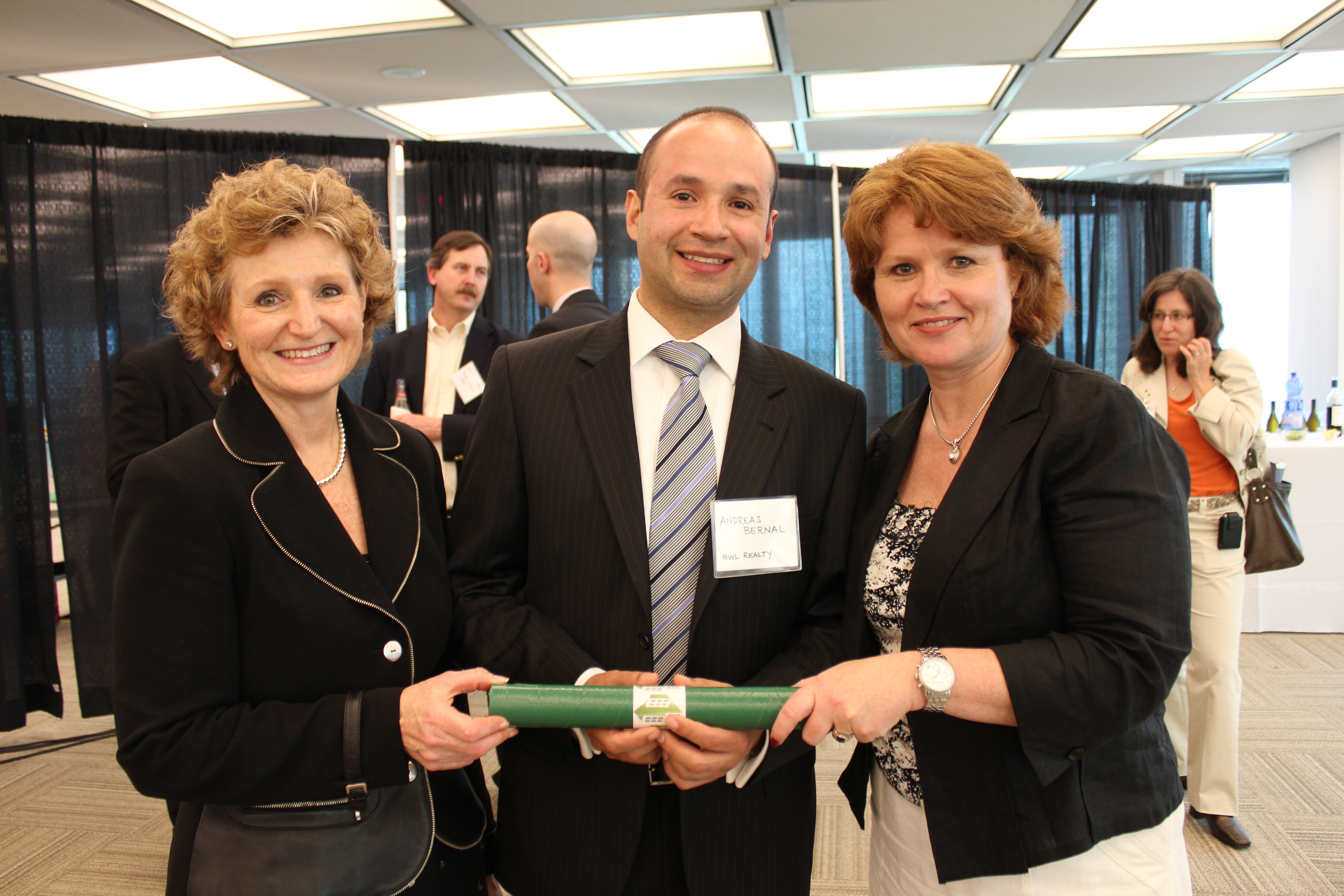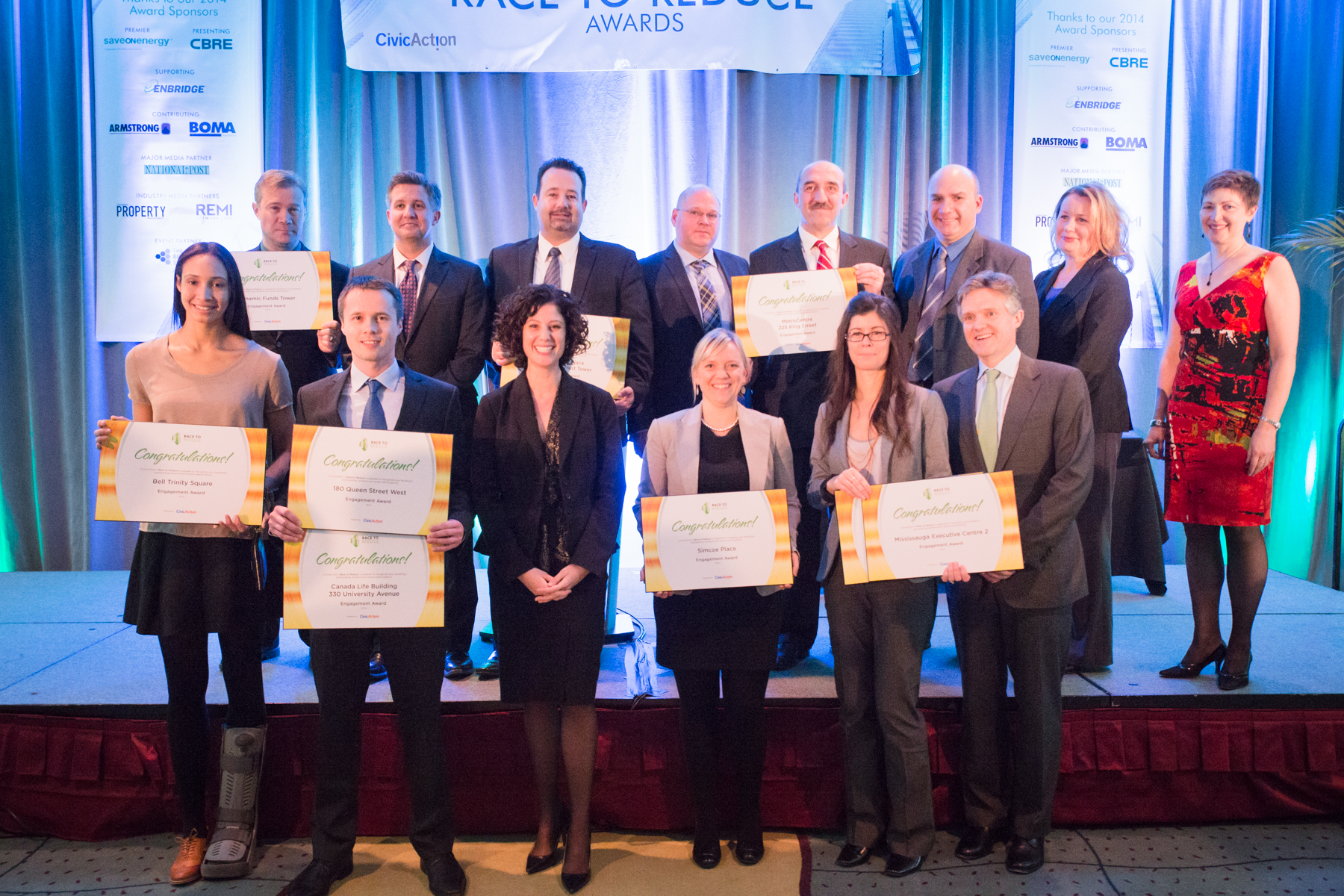CivicAction: Race to Reduce

Projects Sponsor
Summary
CivicAction’s Race to Reduce has mobilized the commercial office sector to reduce energy use and carbon emissions in the Greater Toronto and Hamilton Area (GTHA), while saving millions of dollars in costs. One of the largest regional voluntary energy reduction challenges in the world, it was designed to align with government and market interests and address primary barriers to energy reduction within commercial office buildings through a friendly competition. Landlords and tenants have publicly committed to work together to reduce energy use within their respective buildings, while contributing to a meaningful collective energy reduction target of at least 10 per cent over four years.
Since launching in 2011, the Race has gained incredible traction – attracting over 600 landlord and tenant participants representing over 195 buildings (equating to 69 million square feet or 42 per cent of the Toronto region’s office space). It has delivered a 7.9 per cent collective energy reduction over three years, just two points away from their four-year goal, while embedding new expectations and collaboration among landlords and tenants. It’s also contributed to six awards for CivicAction, including the Clean50 Top 15 Projects award, the 2015 Energy Globe Award for Canada, NAIOP Greater Toronto Chapter’s 2013 Green Award of the Year, the City of Toronto’s 2011 Green Leadership Award, the Toronto Region Conservation’s 2011 Living City Award, and greenliving’s 2011 Excellence in Corporate Responsibility award.
The Challenge
In 2008, research conducted by The Boston Consulting Group showed that the Greater Toronto Area (GTA) office space – estimated at 165 million sq/ ft among 1,750 office buildings – accounted for close to 20% of the carbon emissions in the GTA — second only to transportation — and consumed 37% of the electricity and 17% of the natural gas. While there were ways that building owners, tenants, and occupants could reduce energy, few were doing so.
The Roots of the Race
With this clearly defined problem, in 2009 CivicAction brought the full spectrum of office building stakeholders to the table to identify and address barriers to broader adoption of energy efficiency measures, and proposed the formation of a leadership council of approximately 50 members that would develop solutions to these barriers.
Appreciating the powerful voice of large office tenants, CivicAction invited two of Canada’s largest tenant organizations – BMO and RBC to co-chair the Commercial Building Energy Initiative (CBEI) Leadership Council. It featured a unique mix of senior executive volunteers representing landlords, tenants, service providers, three levels of government, industry associations and utility providers (View Council Members here). Building owners represented over 40% of the Greater Toronto Area’s building stock, while tenants represented some 40 million square feet of office space.
This knowledgeable and influential group put together the foundation of what would become the Race to Reduce by identifying primary barriers to energy efficiency in office buildings and developing a strategy and action plan to tackle them.
Driving Action
In May 2011, CivicAction’s Race to Reduce was launched to challenge Toronto region office building landlords and tenants to publicly commit to work together to reduce the collective energy use in participating office buildings by at least 10% over four years (using 2010 as the baseline year and tracking energy use by participating buildings from 2011 to 2014).

A Strategic Road Map to Success
Informed by the Race’s first year of data analysis (2010/2011) provided by MMM Group, the Race’s data analysis service provider, the Leadership Council with CivicAction staff identified three strategic pillars of activities that would drive the program’s success. The Leadership Council agreed that all activities undertaken by CivicAction staff and the leadership groups would be evaluated against the following desired outcomes:
1. Unprecedented collaboration
2. Measurable and significant impact
3. Legacy/Market transformation
The existing Race to Reduce Working Group, created to shape and optimize the execution of the Race’s four-year strategy and implementation plan, was restructured to align with these pillars. The 30 members of the Working Group were assigned to one of six sub-committees to power the following work streams: Technical, Collaboration, Participant Liaison, Market Transformation/Legacy, Awards, and Communications.
Achieving Measurable Impact
The program has made a significant impact on the region’s commercial office sector, attracting over 600 landlord and tenant participants representing over 195 buildings, equating to 69 million square feet or 42 per cent of the Toronto region’s office space. Race participants have delivered a 7.9 per cent collective energy reduction over three years, just 2 per cent shy of the Race’s final four-year collective reduction goal of 10 per cent. A reduction of 7.9 per cent equates to savings of 107,903,799 ekWh or a reduction of 12,838 metric tons of GHG emissions — equivalent to taking 2,700 cars off the road, and putting $7.6 million back into participants’ pockets.
Beyond the numbers, the Race has contributed to a new era in landlord-tenant relations, opening discussions among landlords and their tenants – people who often don’t talk beyond lease negotiations. The Race and its foundation of landlord-tenant collaboration is catalyzing the transformation of environmental practices in the marketplace. In a recent survey of Race participants, 62 percent indicated the Race is responsible for actions or collaborations that otherwise would not have happened. It has fostered healthy competition and helped companies secure a competitive advantage through their leadership and celebrated performance.
Forming Remarkable Alliances
Throughout the duration of the Race, CIvicAction has collaborated with many types of organizations including tenants, landlords, utilities, service providers and industry associations, leveraging their expertise, networks, tools and resources to enhance the Race and support the energy reduction efforts of participants
Overcoming the Hurdles
The key barriers to energy efficiency in office buildings were identified early on. Key barriers include:
1. A lack of good data to understand a building’s energy use and where it stood in relation to others and industry standards;
2. Knowledge of what buildings could do and what others have done successfully;
3. Lack of information on the tenant business case for energy efficiency investments;
4. Lack of effective communication among landlords and tenants concerning energy efficiency.
Steps taken to address these key barriers include:
1. Ensuring measureable results. Race participants are strongly encouraged to submit their buildings’ energy use and other details to ENERGY STAR Portfolio Manager. This data is used to calculate the collective energy reduction on an annual basis, determine the annual Race to Reduce Building Performance award winners, as well as provide participants with an understanding of their energy use as it relates to others and industry standards, on an anonymous basis.
Initially there was a lack of trust among CBEI Leadership Council members and other Race participants (many of whom were direct competitors) as it related to sharing their building data with the Race. A Working Group of participants was struck to address the need to compare building data confidentially and fairly. The outcome was the sharing of building data on an aggregated, anonymous basis using ENERGY STAR Portfolio Manager as the measurement tool. The use of Portfolio Manager enabled the comparison of data in a fair and consistent manner.
2. Shared learnings. Race participants have access to a library of over 1,000 case studies provided by Toronto and Region Conservation’s Partners in Project Green. In addition, Race participants share their energy reduction initiatives via case studies posted on the Race to Reduce website.
3. Compelling business case. Boston Consulting Group and Halsall came together to develop a business case in support of energy reduction efforts that was made available to Race participants online and through individual buildings’ “Greening Our Workplace” sessions.
4. Landlord, Tenant Collaboration: With tenants responsible for up to 50% of a building’s energy use, encouraging and supporting landlord-tenant collaboration would be a key driver to success. The Race to Reduce provided a unique platform for landlord-tenant energy reduction conversations.
Spreading the Word and Leaving a Lasting Legacy
To maximize the Race’s contribution and impact, CivicAction has secured mainstream and industry media coverage, as well as speaking on industry panels and seeking and securing awards.
CivicAction’s Race to Reduce is accelerating a positive shift in office building sector market practices relating to energy conservation beyond its geographic boundaries.
• Through its adoption of ENERGY STAR Portfolio Manager as its energy measurement tool, the Race is helping to establish a systematic, market-wide process for benchmarking performance and reporting on progress in Canada.
• Many of the major landlord and tenant participants own, manage or lease space across the province, country, and internationally, and are setting new targets and adopting new practices across their portfolios based on their experience within the Race. By reaching a “critical mass” of landlords and tenants within office buildings, energy reduction conversations and practices are becoming the “norm” within the sector.















